The Benefits of Compression Socks for Chefs
Scientifically Reviewed by Daniel Chantigian
Working in a restaurant means long shifts, spent mostly on your feet. As a chef, you don’t get much rest from start to finish, so you need to look after your lower legs and feet to prevent swelling, pain, and discomfort. Compression socks can help with that, all while making you feel more energized and ready for whatever your shift brings.
Can chefs benefit from wearing compression socks? Yes! Through the gentle pressure applied to the lower limbs, compression socks massage the muscles, boost peripheral circulation, and help with feeling more energized and comfortable on long shifts.
In this article, we’ll look at the specific ways in which chefs benefit from wearing compression socks and we’ll give you some tips on choosing the best pair for you.
Why Do Chefs Need Compression Socks?
Most chefs spend a lot of time on their feet. Whether chopping up ingredients, cooking, overseeing other members of the team, or plating up delicious dishes for your restaurant’s guests… it’s all done standing up. This adds chefs to the category of jobs that put a lot of strain on their feet and legs.
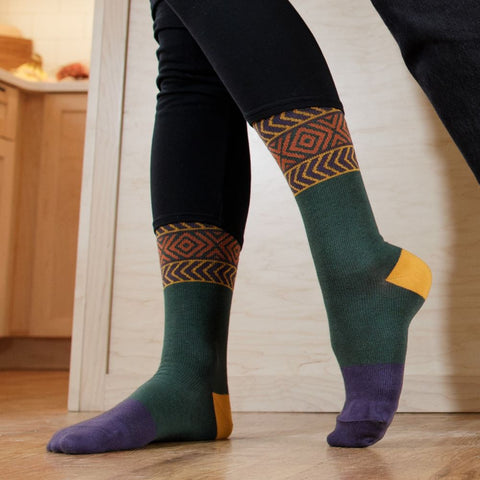
When you spend so many hours on your feet, gravity makes it harder for blood to flow freely back up towards the heart. It can pool around the ankles, which leads to swelling, discomfort, and even pain. Moreover, poor peripheral circulation can cause blood clots and more serious conditions like deep vein thrombosis, over time. Not to mention unpleasant feelings of “heavy legs,” numbness, tingly feet, or just lack of energy.
Graduated compression socks apply gentle pressure to the lower legs, gripping tighter towards the ankle and less so, as they move up the leg to underneath the knee. This stimulates circulation in the legs and pushes blood up towards the heart. As a result, the chances of blood pooling around the ankles, causing pain and swelling, are lower.
Additionally, wearing compression socks for chefs helps massage and support the muscles in the lower legs, helping them keep their energy and reducing pain and fatigue. The added support to joints, such as the ankles, is also a bonus. And, finally, for those suffering from poor peripheral circulation and getting cold feet, the blood flow boost from compression socks should help with temperature regulation.
The Benefits of Compression Socks for Chefs
Compression socks and stockings are generally beneficial for anyone suffering from poor peripheral circulation and for those who are looking for more support and pain relief for their lower leg muscles. Here’s how they can help chefs at work and while relaxing afterwards.
Improved Circulation
The number one benefit of compression socks is their impact on circulation. As they gently squeeze the lower legs, they help boost blood flow in an area that’s generally negatively impacted by standing up or sitting for long periods of time. The result is better blood flow throughout the body.
Improvements in circulation help reduce the risk of a number of medical conditions, such as edema, deep vein thrombosis, venous insufficiency, or varicose veins. Additionally, better blood flow helps muscles recover faster, which is why compression socks are routinely used by athletes during recovery. And there are benefits for temperature regulation, as we outline below.
Reduced Leg Pain and Fatigue
Cooking and coordinating a professional kitchen every day takes its toll on muscles and joints, leading to leg pain and fatigue. What’s worse, you probably don’t have a very long time to recover from one shift to the next.

Wearing compression socks helps on this front, through two types of actions. First off, compression socks boost blood flow in the lower legs, which improves the transportation of oxygen and nutrients to the muscles and reduces the risk of swelling and discomfort. This means that your legs will feel less tired and more comfortable not only throughout the work shift, but also outside work.
Secondly, compression socks massage the leg muscles as you wear them. This helps create a pleasant feeling of relief, especially when you start to feel sore in the middle of a long day on your feet. Draining unwanted fluid and keeping legs energized, these chef socks can make a huge difference to your energy levels.
Improved Energy and Stamina
What can be better than feeling light on your feet and ready for action throughout your shift in the kitchen? Thanks to boosted blood flow, compression socks deliver nutrients and oxygen to your muscles all the time you wear them. If you’ve been using them for recovery after a shift, in advance of stepping in the kitchen, or during work, you’ll notice a shift in how much longer it takes for muscles to feel tired and sore. Additionally, the lighter feeling in your legs will give you a boost in stamina.
Swelling and Edema Prevention
When blood pools in the veins, there’s the risk of developing blood clots which can be life threatening. But, before that, many people who work on their feet first experience swelling and edema. This can be caused by a buildup of fluid, as well, not just impaired blood flow.
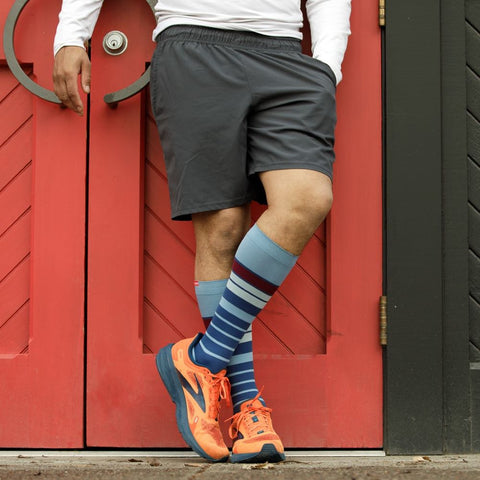
Chefs’ compression socks help prevent these scenarios. They massage the muscles in the lower legs, helping drain fluid from the area. Graduated compression socks then boost the blood flow upwards, towards the heart, preventing any of it from sitting in the veins and creating blockages.
Muscle Support
Many athletes swear by compression socks when they return to training after injuring their calf muscles, Achilles tendon, or ankles. In addition to stimulating blood flow to a swollen, inflamed, or painful part of the body, compression therapy is also responsible for added support where it is applied. The simple squeeze of the muscle or joint increases support, which gives the wearer more confidence and stability. Additionally, the muscle support contributes to reducing fatigue and muscle damage in the long run.
For chefs, this means that recovering from injuries or preventing any discomfort is made easier when wearing compression socks. It also keeps legs and feet more energized and better supported, helping avoid an accidental ankle sprain while racing around the kitchen.
Temperature Regulation
Finally, chefs suffering from poor peripheral circulation can say good-bye to cold feet if they wear good-quality, effective compression socks. Increased blood flow to the feet and lower legs helps increase the temperature in that area, too. As a result, your feet are less likely to go numb or feel cold when you work.
Additionally, wearing a thermoregulating fabric like merino wool on your feet helps keep them dry, wicking away moisture in all weather conditions. Combine this with compression in merino wool compression socks and your feet will thank you.
How to Wear Compression Socks for Chefs
So, what’s the secret to benefiting from compression as a chef? You can mix up how and when you wear compression socks, depending on your personal preference and length of shifts, temperature in the restaurant, etc.

Here are some tips for making the most of your chefs’ compression socks:
- You can wear compression socks for as long as you feel comfortable, but it’s a good idea to start with just a couple of hours when you put on your first pair. Get used to the squeeze and the massaging action of the socks, then gradually increase how long you wear them. This may mean that you’ll first put them on for a few hours at home, before eventually wearing them for a full work shift.
- Ensure you always have the right size of socks to get the full benefit. Compression socks need to be tight to work on your veins and muscles, but wear them too tight and they’ll cut off your circulation or cause pain and discomfort. Use a size guide to help you.
- Wear your compression socks to recover from a long shift, while relaxing. If you haven’t got to the stage where you’re comfortable having tight socks on for a few hours, you can always boost blood flow and reduce swelling and muscle soreness after work. Put on your socks for 2-3 hours before bed and lie down, feeling the massage on your muscles and letting the increased blood flow re-energize the legs.
- You can also wear compression socks as preparation for a long shift. Put them on before you’re due to go into work, boosting blood flow and getting your legs “warmed up.”
- Always check the manufacturer’s instructions to care for your socks. This will ensure they stay effective for longer. Wash them after every wear and let them air dry so they stay tight.
- Don’t wear compression socks over eczema, rashes, or open cuts or grazes. Avoid putting them on over lotion or cream as well, as this can damage the fibers and could potentially irritate your skin, too.
The Best Compression Socks for Chefs
How can you make the best choice among all the types of compression socks and sleeves available? Here’s a handy guide to get you started.
Styles and Materials Available
Compression socks come in a variety of materials, which is important as they can influence when you wear them and how they impact temperature regulation and moisture:
- Cotton - for everyday wear, adequate for wearing in kitchens that are well ventilated, but not ideal for hot days as cotton doesn’t wick away moisture effectively;
- Nylon - slick and tight, these compression socks move with your body and are best suited for athletic activities;
- Merino wool - ideal for all temperatures and humidity levels, merino is moisture-wicking and thermoregulating so will keep feet dry and comfortable, while not allowing you to get too hot or too cold.
Moreover, depending on personal preference, you can choose between different styles of compression garments for the lower body:
- Open-toe compression socks if you want to wear them with sandals or need to let toes breathe;
- Compression sleeves if you prefer to focus on the calf muscles and shins only;
- Knee-high compression socks - the classic design that boosts blood flow and provides multiple benefits;
- Compression tights and leggings for full-leg coverage.
Finding the Right Compression Level
Another element to consider with your chef’s compression socks is that compression actually comes in multiple levels. These represent how tight the socks are and are measured in mmHg.

For everyday wear and for those who do not suffer from any medical condition, the ideal option is to choose 15-20 mmHg - moderate compression that will support the muscles and boost blood circulation. However, if you have certain concerns or medical conditions like edema or blood clots, then the 20-30 mmHg range, which offers a firmer hold, is recommended. Finally, there are medical grade compression socks that you can wear with a prescription, in the 30-40 mmHg range.
You should consult with your doctor if you have any circulatory problems or medical conditions, so that they can prescribe stronger compression socks, should these be beneficial to you.
Tips for Sizing and Fit
Finally, as we mentioned above, having the right size and fit for your compression socks is crucial for them to actually work their magic on your lower limbs. A size guide helps you match your measurements to the manufacturer’s sizes and is your first step towards achieving best fit.
Additionally, consider the following criteria to know if your socks fit right:
- Your compression socks shouldn’t bunch - they should fit smoothly against your skin;
- The top line of the sock needs to be just underneath the knee; if your sock stops short, then you’ll be applying unwelcome pressure to partway up your calf muscle, which will be painful and can lead to bruises and cut off your circulation;
- Ensure that the heel and toes fit firmly against the edges of your socks, so that your feet get the benefit of the tight fit; this also avoids any chafing and rubbing;
- If your socks feel uncomfortably tight, remove them and look for a different size - don’t wait until you get bruising or pain to do so!
- If your socks are too loose and roll down, again, remove them and look for a different size - you won’t be getting any compression benefits from the current pair.
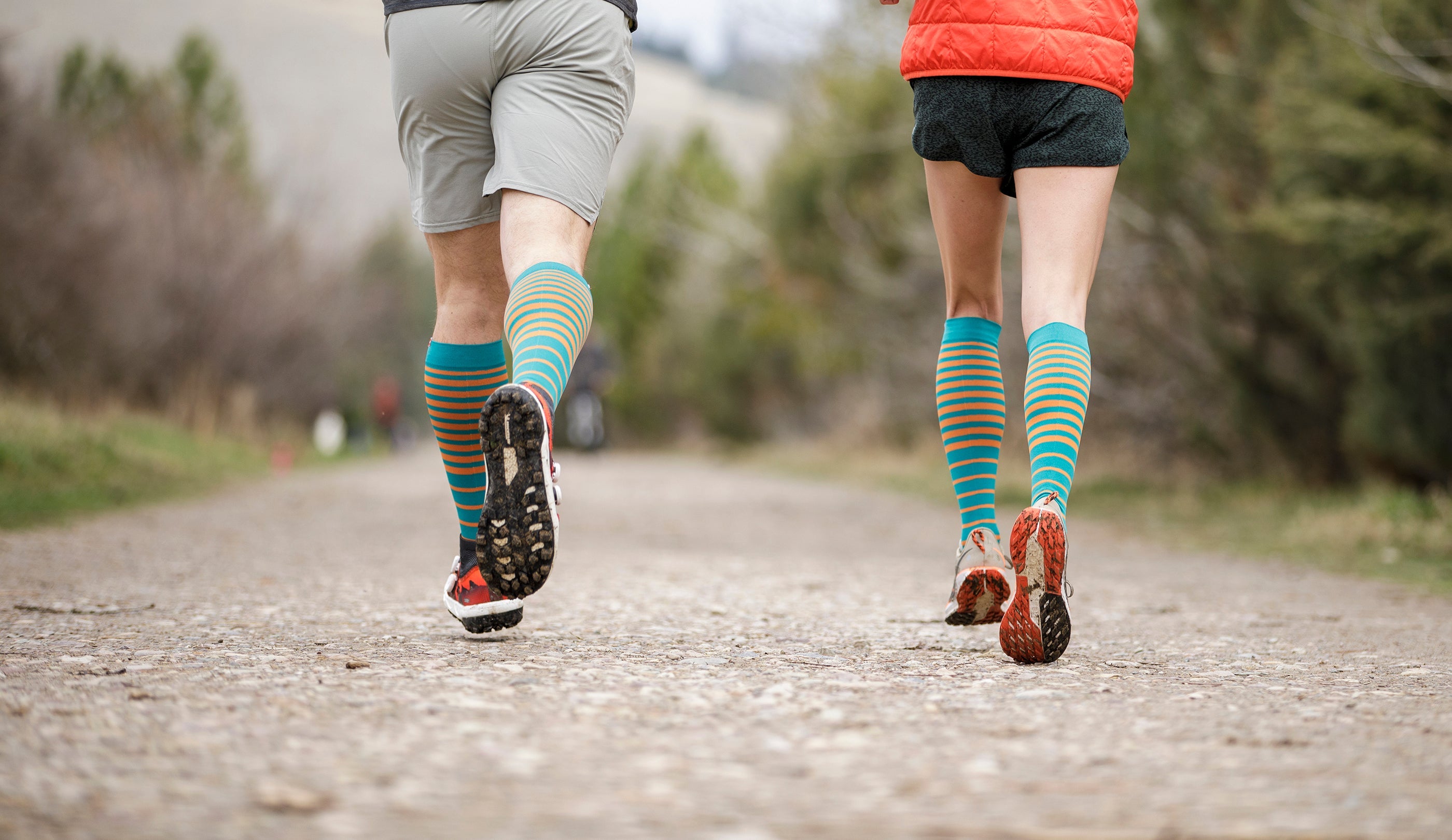







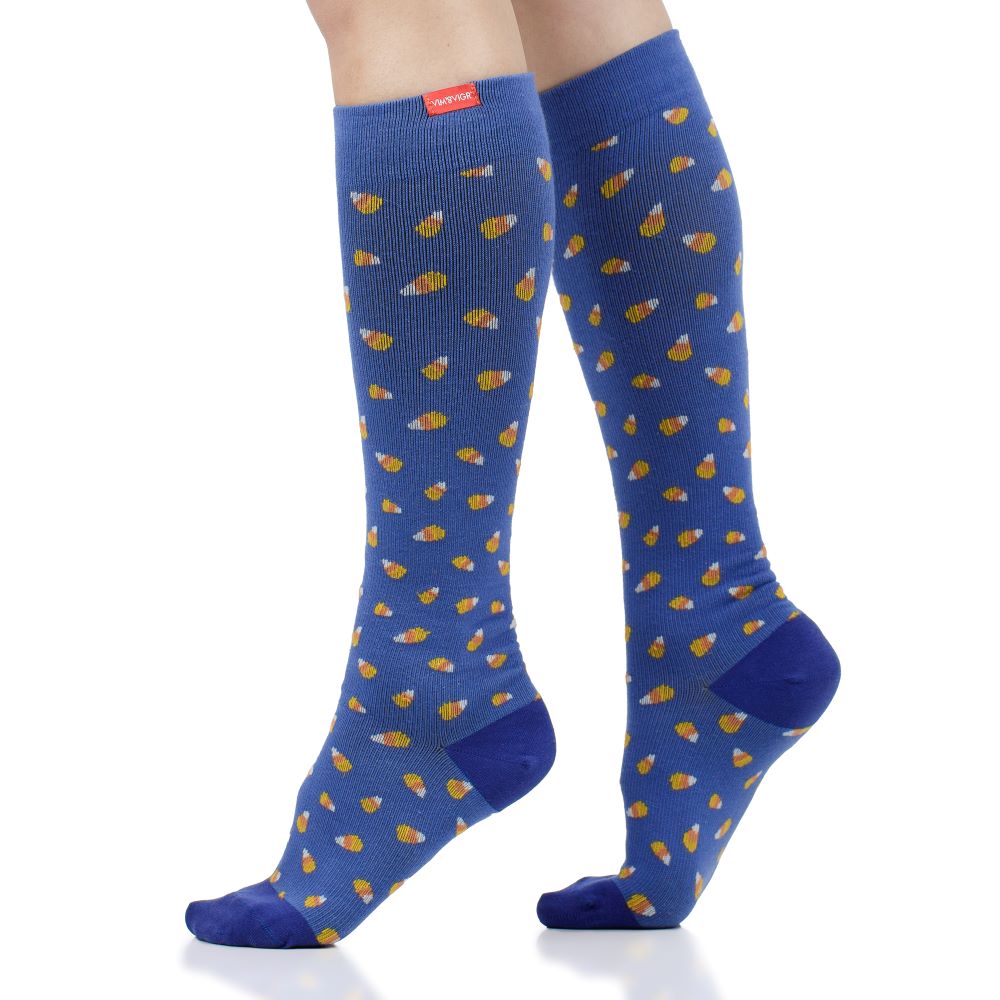

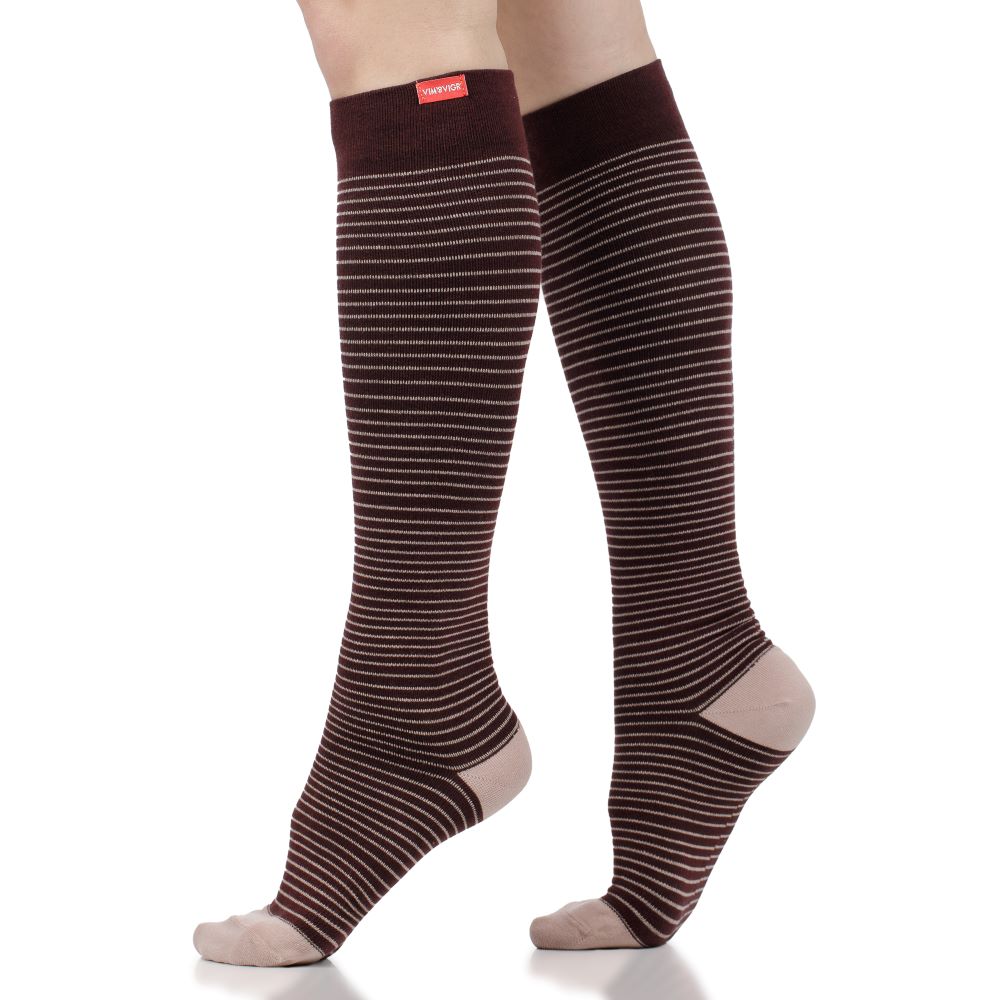
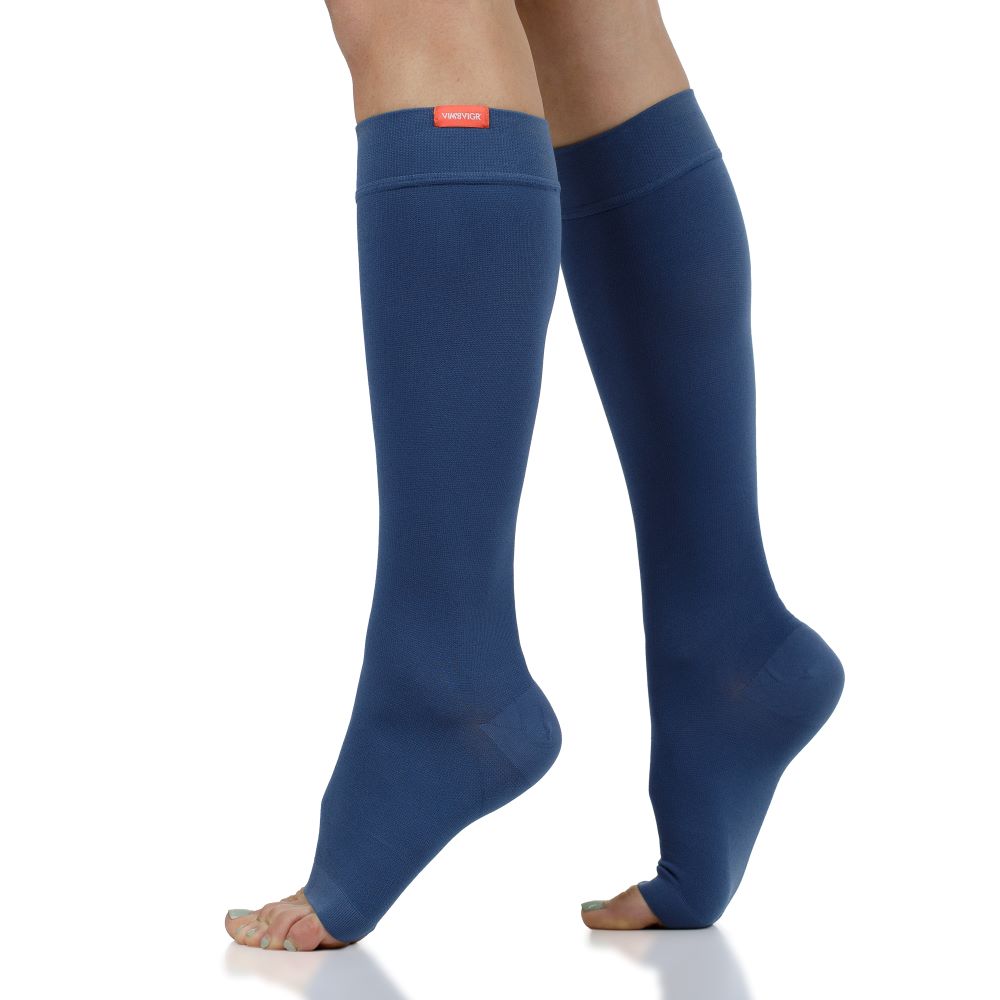
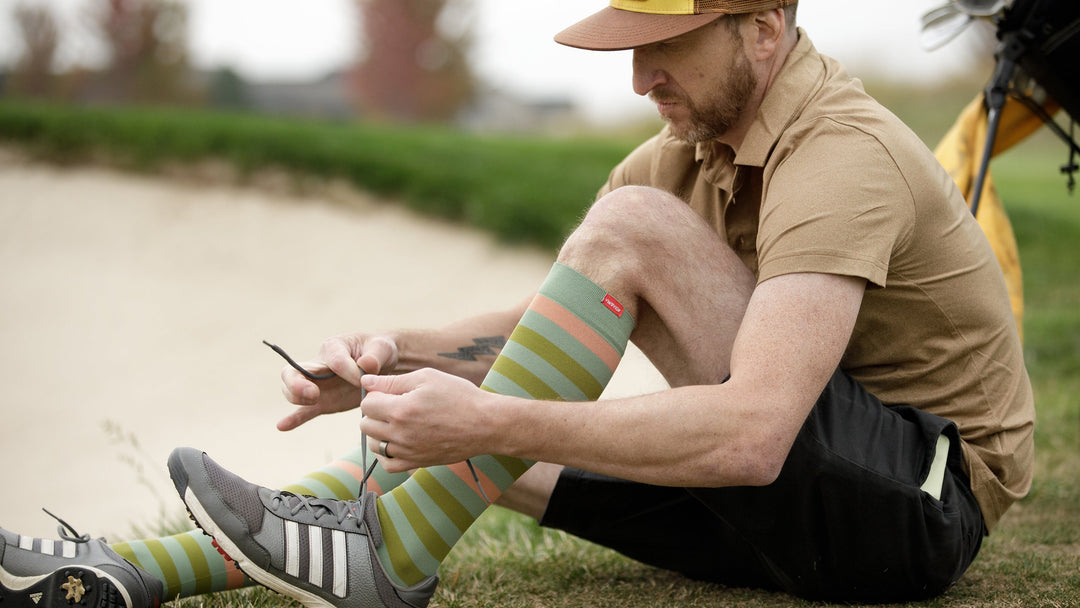
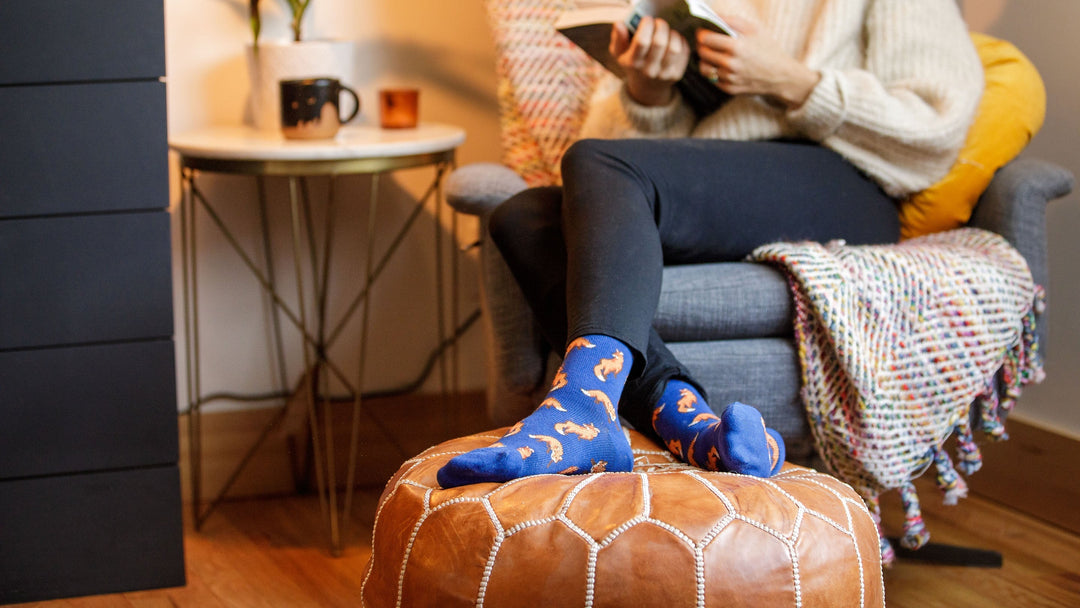
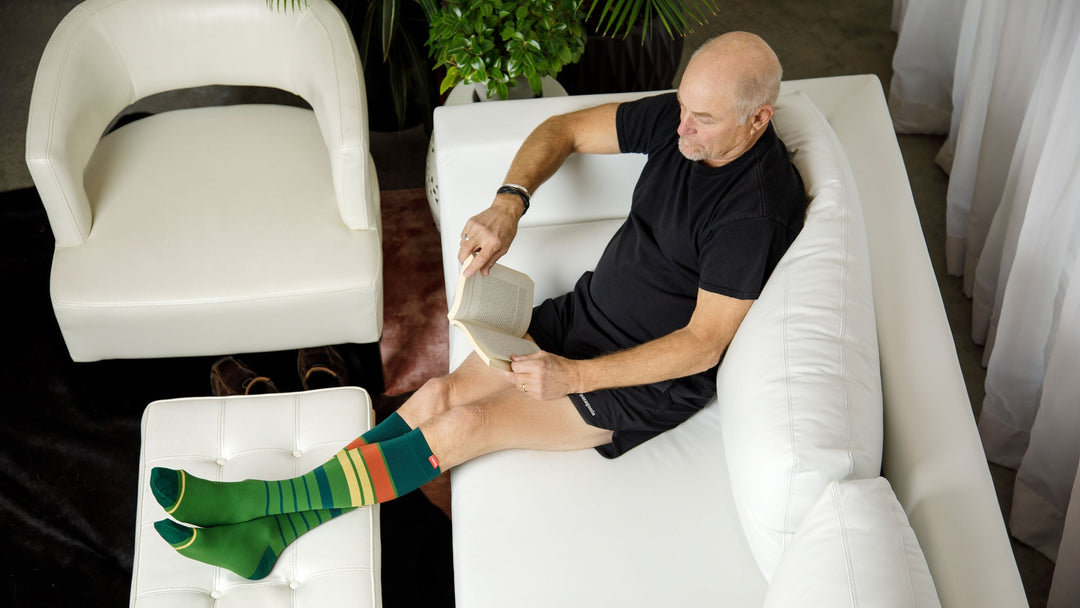



Thank you for the most concise information on your product. Your size chart with real people was perfect. I will be buying my socks shortly. I wish all manufacturers were as considerate of their customers as you have been.
Leave a comment